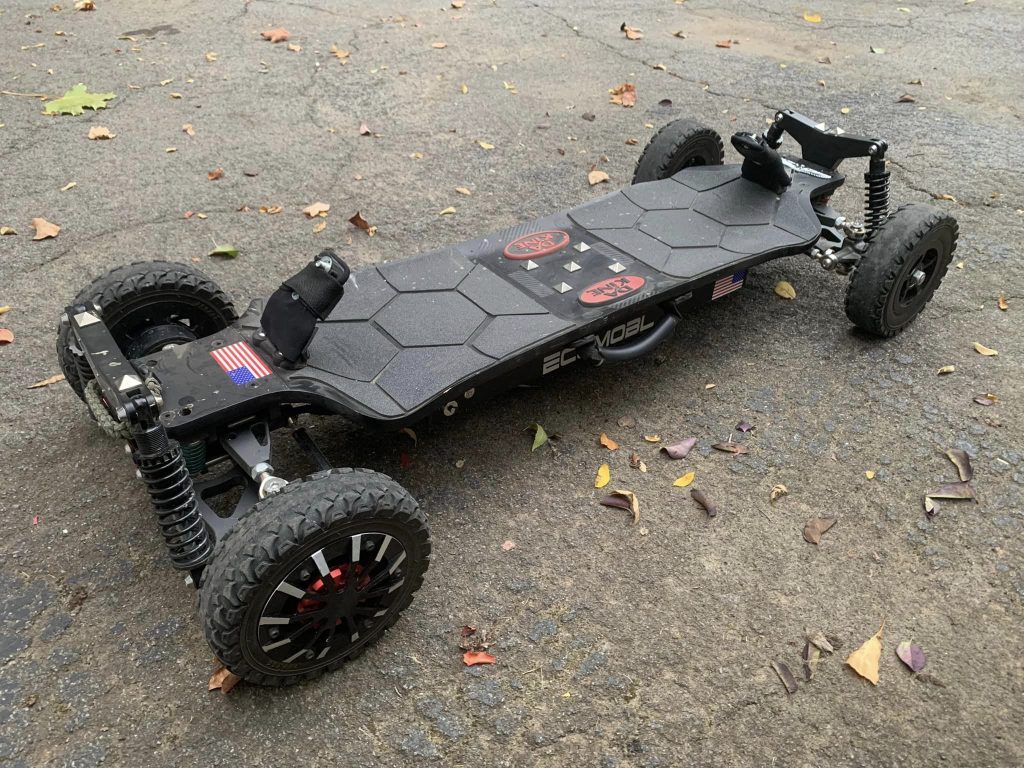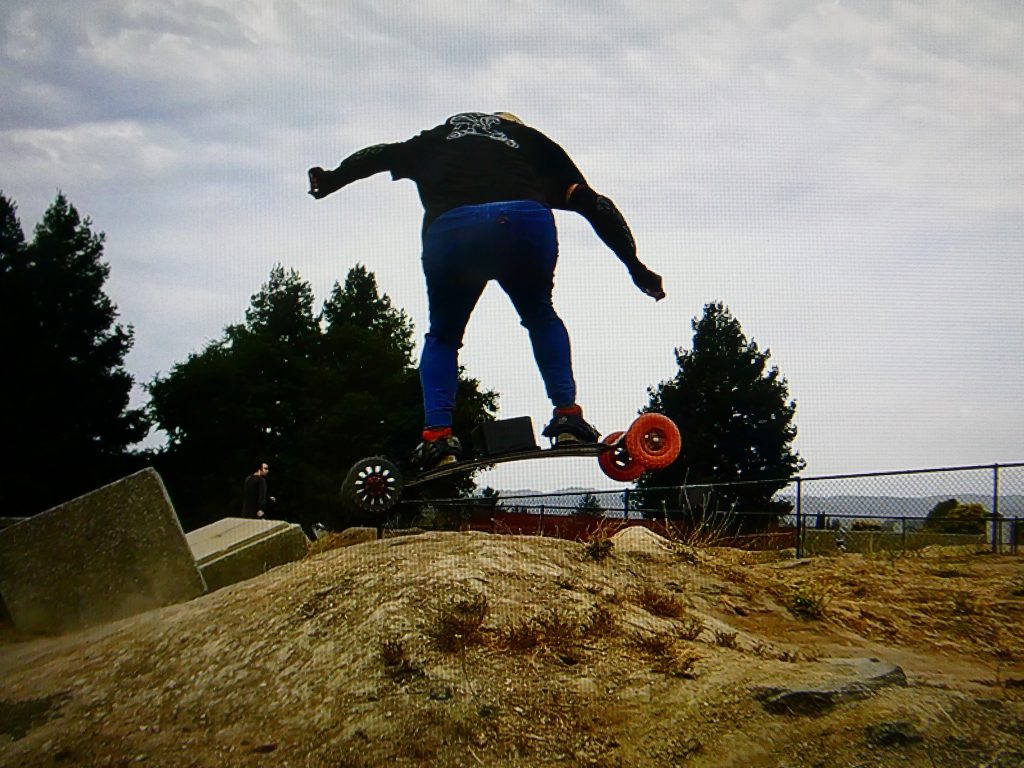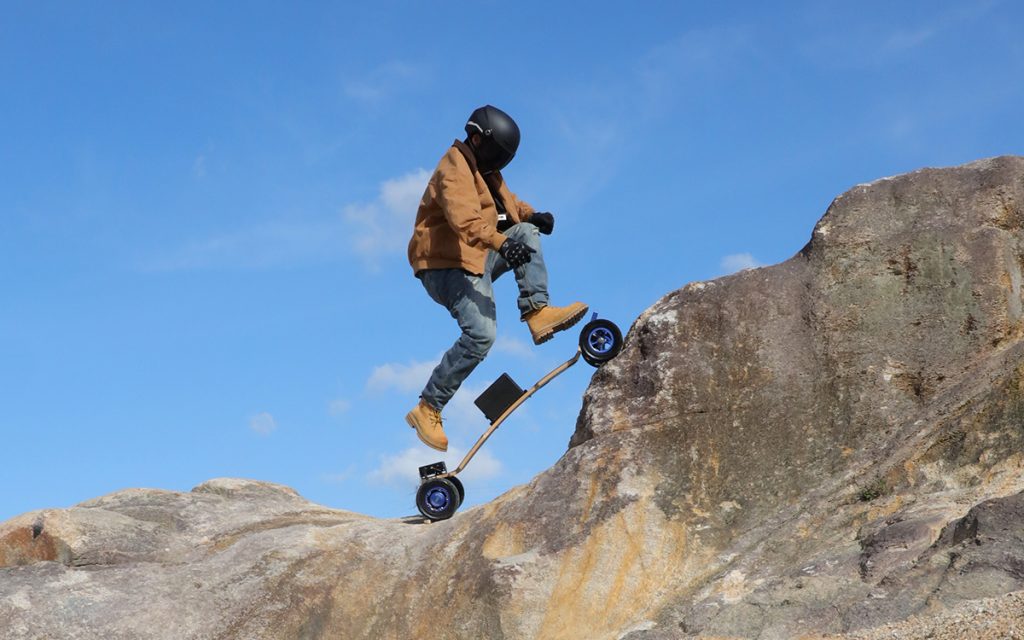Imagine surfing and bathing in the warm sunshine, feeling the ocean breeze and the rush of freedom from the ocean waves, but what if you wanted to surf on land?
In the sun-drenched streets of 1960s California, a revolution born from the sea waves began to take shape on land. When the ocean was calm, surfers yearned to recreate that exhilarating freedom on pavement, and thus, skateboarding emerged.
What started as a simple wooden plank with wheels has evolved into modern urban mobility, especially through the rise of electric skateboards.
And its roots are buried deeply in early cultures:

The Roots of Skateboarding Culture
As mentioned above, skateboarding’s origin is tightly intertwined with the surf culture of 1960s California. When the waves were flat, surfers attempted to recreate the sensation of gliding, this time on hard pavement, giving birth to the earliest skateboards.
Initially a simple leisure activity, skateboarding quickly developed its own cultural identity:
It became a powerful symbol of youth rebellion. Integrated with punk and hip-hop music, street art, and fashion, it created a vibrant cultural ecosystem rooted in authenticity and self-expression.
It wasn’t merely a sport; it was about identity.
| Time | Classic Skateboarding Fashion |
| 1960s-1970s |
|
| Late 1970s-Early 1980s |
|
Skateboarding Environments
- Urban sidewalks, parking lots, public squares (seeking smooth surfaces)
- Sloped residential streets (early downhill riding)
- Empty backyard swimming pools (the origin of pool skating culture)
- Concrete ramps at construction sites (adventurous terrains)
The essence of traditional skateboarding is rooted in adventure, freedom, and rebellion. As the table shows, early skaters expressed their individuality through ripped jeans, DIY shirts, and functional skate shoes, embracing a distinctly rebellious spirit.
For the early skaters, any environment, be it a smooth sidewalk or the steep slope of a construction site, could become their playground. The intimate interaction between rider and board demanded physical mastery to perform tricks and fostered a close connection to urban landscapes.
Traditional skaters prided themselves on succeeding through pure skill and balance, without technological assistance.
Yet, despite its strong cultural roots, technological advancement, and humanity’s eternal desire for greater speed and distance, it inevitably sparked innovation.
Thus began a new chapter in skateboarding history: the emergence of the electric skateboards.
The Rise of the Electric Revolution
In the beginning, electric skateboards were heavy, experimental devices with a short range. Even though they were crude by today’s standards, they represented a daring idea: taking skateboarding beyond the realm of human strength. These archaic models represented the initial move toward a new frontier in riding culture.
As lithium battery technology improved and motors became smaller and more efficient, the electric skateboard evolved dramatically.
Modern electric skateboards now feature sleek designs, smartphone connectivity, regenerative braking systems, and longer ranges once thought impossible just a decade ago.
| Aspect | Traditional Skateboard | Electric Skateboard |
| Power Source | Human-powered (foot-pushing) | Electric motor-driven, remote-controlled acceleration and braking |
| Control Method | Full-body movement (foot push, weight shifting, deck manipulation) | Handheld remote for throttle/brake, combined with body weight for steering |
| Speed Range | Average 5–12 km/h (based on pushing force) | Average 20–40 km/h, higher on premium models |
| Riding Experience | Requires continuous effort, emphasizes trick performance, and street culture | Enables long-distance, low-effort commuting with strong speed thrills |
| Endurance / Energy Consumption | Limited by the rider’s stamina | Limited by battery capacity, the typical ranges are 15–40 km per charge |
| Application Scenarios | Street skating, parks, skateparks, trick training | Urban commuting, long-distance cruising, short trips, recreational rides |
These technological transformations made the joy of “land surfing” more accessible than ever before.
As a result, users expanded dramatically beyond tech enthusiasts and early adopters. The market of electric skateboards for adults surged, attracting professionals seeking efficient commuting alternatives, traditional board skaters returning to the sport with a tech boost, and newcomers drawn by the lower entry barrier.
But did new electric skateboards replace traditional ones?
Absolutely not.
Instead, electric skateboards have expanded skateboarding culture, establishing a parallel tradition that honors the original spirit of freedom while embracing technological innovation. In this new subculture, speed, range, and the skateboarding ethos coexist.

From Recreation to Practical Transportation
Initially, electric skateboards were seen mainly as recreational devices, extending the freedom of traditional skating with added power.
But with leaps in battery life and increasing urban traffic challenges, their practical value entered public awareness with force, transforming from pure fun to serious transportation.
According to the BTS Moving People report, while private cars still dominate U.S. commuting, micro-mobility devices (like electric skateboards) have already accounted for about 8% of the total transportation share; in environments like university campuses, the percentage is even higher.
Additionally, in 2023, the global e-scooter market was valued at approximately $37.07 billion and is expected to grow to $78.65 billion by 2030, with a CAGR of 9.9% (source from Grand View Research), reflecting strong potential for growth.
Why Electric Skateboards?
Today’s electric skateboards have evolved into legitimate daily transportation tools.
They provide urban commuters with a practical and environmentally-friendly solution, helping office workers navigate congested city centers, and offering a green alternative to short car trips—all while maintaining the inherent joy of riding.
A good electric skateboard must balance several critical factors:
- Substantial range per charge
- Reasonable charging time
- Responsive and intuitive control system
- Durable and robust construction
- Versatility across diverse terrains
The best models are highly adaptable, catering to various rider needs while maintaining reliability across different environments.
Electric longboards, with their larger wheels, extended decks, and excellent stability, have become the preferred choice for long-distance commuting.
The enhanced battery capacities enable riders to explore beyond urban limits into broader adventures.
Skill Transferability Between Platforms
Electric skateboards require many of the same basic abilities as traditional skateboarding.
Experienced skaters have an advantage during the transition since balance awareness, posture control, and weight distribution techniques are still very important.
However, there are new learning curves associated with electric skateboards:
- To get good at remote-controlled speeding up and slowing down, you need to work on your muscle memory and reaction time.
- You need to get good at controlling the throttle and learn how long it will take to stop at different speeds.
As part of the adjusting process, people often have to get used to how the throttle responds and how hard they have to brake. A lot of beginners go through stages of overcorrection before they can control their movements smoothly.
High-quality electric skateboards usually offer multiple riding modes, allowing beginners to start with lower speeds and power levels, then progressively graduate to higher-performance settings. This progressive approach enables both newcomers and seasoned skaters to transition comfortably and safely.
Safety Considerations in the Transition
Shifting from traditional skateboarding’s slower speeds to the 20+ mph capabilities of electric skateboards requires a complete reassessment of safety practices.
Higher speeds drastically alter the risk profile.
Protective Gear
In the world of electric skateboarding, protective gear is NEVER optional.
A helmet is the absolute minimum requirement (akin to a seatbelt in a car), but responsible riders also wear gloves, knee pads, elbow pads, and reflective clothing for nighttime rides.
New Risk Factors
New risks include:
- Longer braking distances at higher speeds
- Potential electronic malfunctions
- Complex urban traffic challenges
Thus, riders must develop enhanced situational awareness and anticipate potential hazards much earlier.
Regulations
For safe and legal riding, it’s also important to know the rules in your area about electric skateboards for adults.
Electric skateboards can only be used in certain places and at certain speeds, depending on the classification rules and speed limits that have been set by each state.
Also, the group of people who ride electric skateboards is pushing for more responsible riding behavior, like respecting pedestrians and vehicles.
This helps better integrate new mobility devices into existing urban ecosystems, while building a positive public image.

Final Thoughts
The evolution from traditional to electric skateboarding embodies much more than technological advancement; it highlights skateboarding culture’s ability to respect its roots while embracing innovation.
As electric skateboards continue to improve in power, range, and reliability, they aren’t replacing traditional skateboards; they are expanding skateboarding’s possibilities. Today, skateboarding is not only a cultural symbol of rebellion and freedom but also a reliable commuting solution.
Riders, much like the rebels of the 1960s, still embrace freedom and individuality, but now with new responsibilities as well. Electric skateboards carry the spirit of riding into new generations and broader landscapes.
Ready to experience electric skateboarding? Explore Ecomobl and discover new possibilities in the culture of freedom.




